Creating hypertufa projects is fun and rewarding. It lets you add a personal touch to your garden with DIY planters. Hypertufa projects make your outdoor space special, offering a creative outlet for garden lovers. You can make beautiful, durable planters that match your garden décor.
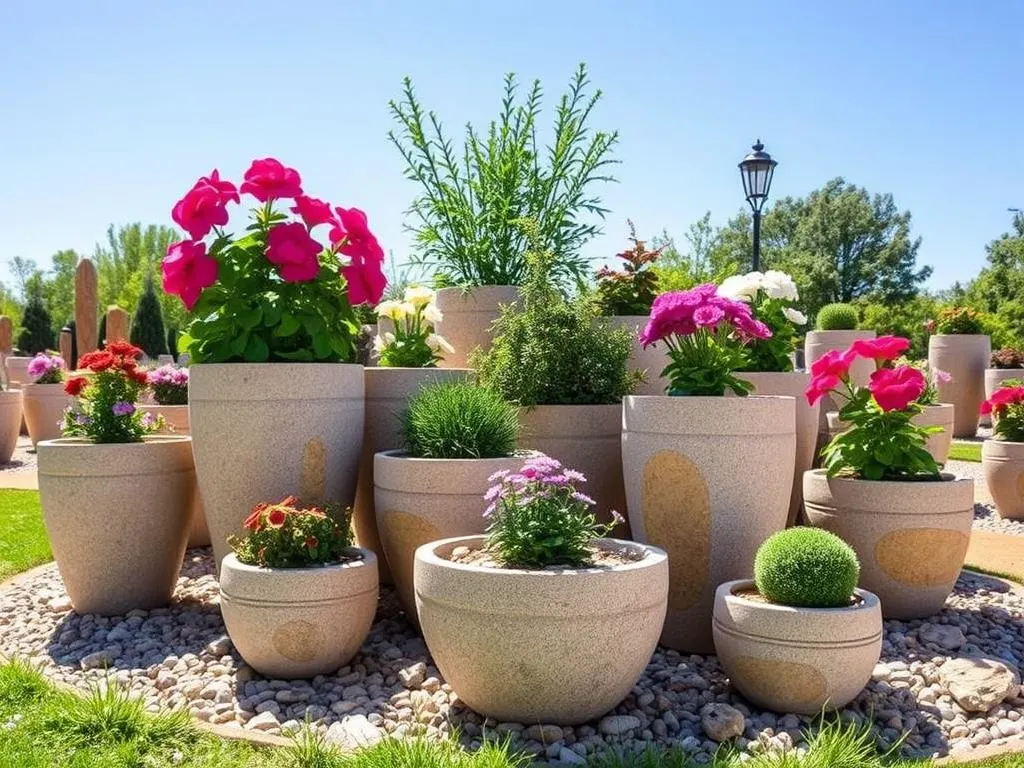
Exploring hypertufa projects lets you find new ways to express your creativity. DIY planters from hypertufa are not only useful but also look great. They’re perfect for any garden decor. Hypertufa projects are great for both experienced gardeners and beginners, enhancing your outdoor space.
Key Takeaways
- Hypertufa projects allow you to create unique and personalized DIY planters for your garden.
- DIY planters made from hypertufa are durable and can withstand various weather conditions.
- Hypertufa projects offer a creative outlet for garden enthusiasts to enhance their garden decor.
- With hypertufa, you can create a wide range of planters, from simple to complex designs.
- Hypertufa planters are a great way to add a personal touch to your garden decor and make your outdoor space more inviting.
Understanding Hypertufa: The Artificial Stone for Modern Gardens
Hypertufa is a unique material that’s popular in modern gardens. It’s an artificial stone that can be shaped in many ways. This makes it perfect for garden planters and decorative features.
In modern gardens, hypertufa is used for planters and decorative features. It adds elegance and sophistication. Its durability and weather resistance make it great for outdoor use. Plus, it can be molded into complex shapes for creativity and customization.
What Makes Hypertufa Special
Hypertufa is special because it’s lightweight and porous. It’s easy to work with and can be shaped in many ways. It’s also a cost-effective alternative to traditional stone or concrete.
Historical Background of Hypertufa
Hypertufa has ancient roots, used for decorative features and architecture. Today, it’s still used for these purposes. Its popularity has grown due to its versatility and ease of use.
Benefits Over Traditional Concrete
Hypertufa has several benefits over traditional concrete. It’s lightweight and porous, making it easier to work with. It’s also more resistant to weathering. Plus, it’s a more environmentally friendly option, made from recycled materials.
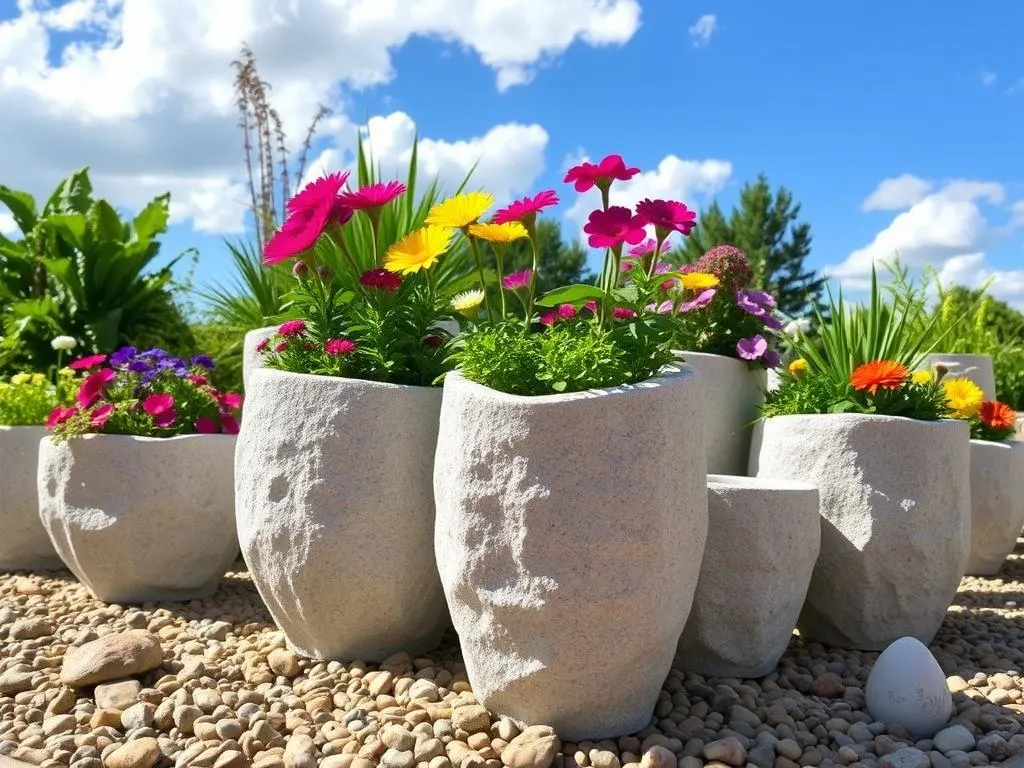
Hypertufa is a unique and versatile material for modern gardens. It can be molded into complex shapes, is durable, and cost-effective. These qualities make it a great choice for adding elegance and sophistication to outdoor spaces.
| Material | Benefits | Drawbacks |
|---|---|---|
| Hypertufa | Lightweight, porous, cost-effective, environmentally friendly | May require special care and maintenance |
| Traditional Concrete | Durable, long-lasting | Heavy, expensive, environmentally unfriendly |
Essential Materials for Creating Hypertufa Planters
To start gardening projects with hypertufa, knowing the hypertufa mixture is key. This special mix makes hypertufa better than regular concrete. It includes cement, aggregates, and fibers, each important for durability and look.
Getting the right mix of these materials is crucial for hypertufa projects. The mix usually has:
- Cement, which holds everything together
- Aggregates, like peat moss or perlite, for structure and to help water drain
- Fibers, such as coconut coir or synthetic ones, to make it stronger and less likely to crack
Knowing how each part works in the hypertufa mixture is vital for gardening projects. By picking and mixing these materials well, you can make planters that last and look great. They’re perfect for any garden or indoor spot.

When you’re ready to begin your hypertufa projects, remember that the quality of your materials matters a lot. Using high-quality stuff will make your planters last longer and need less care. This lets you enjoy your gardening projects for many years.
| Material | Role in Hypertufa Mixture |
|---|---|
| Cement | Acts as the binder, holding the mixture together |
| Aggregates | Provides structure and enhances drainage |
| Fibers | Increases strength and reduces the likelihood of cracking |
Must-Have Tools for Your Hypertufa Projects
To make beautiful hypertufa planters, you need the right DIY tools and gardening equipment. A good toolkit makes your projects better and more fun. The tools you choose can really affect how your hypertufa looks.
Start with a mixing bucket, a shovel or trowel, and a mold. You’ll also need a level, a wire brush, and a putty knife for the final touches. Don’t forget gloves, safety glasses, and a dust mask for safety.
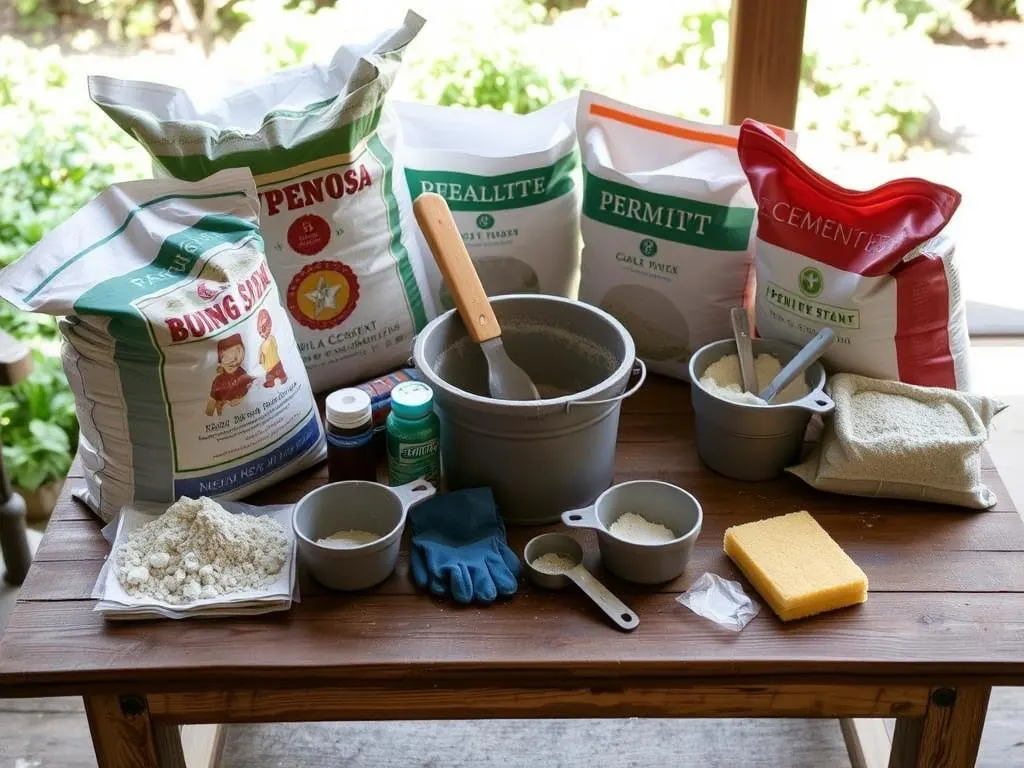
For more complex designs, consider optional DIY tools. These might include a drill, a texture mat, or sculpting tools. With the right gardening equipment and creativity, you can make unique hypertufa planters.
| Tool | Description |
|---|---|
| Mixing Bucket | A large bucket for mixing hypertufa ingredients |
| Shovel or Trowel | A tool for mixing and applying hypertufa mixture |
| Mold | A container to shape your hypertufa planter |
Investing in the right DIY tools and gardening equipment will help you create stunning hypertufa planters. They will make your garden even more special.
Basic Hypertufa Mixture Recipe and Ratios
To make outdoor planters that last, you need a balanced hypertufa recipe. The mix has cement, peat moss, and perlite or vermiculite. The best mix is 1 part cement, 1 part peat moss, and 1 part perlite or vermiculite. This mix is strong and lets roots breathe, great for plants.
Here’s a list of ingredients and their ratios:
- 1 part cement
- 1 part peat moss
- 1 part perlite or vermiculite
When mixing, start with peat moss and perlite or vermiculite. Then add cement slowly. Mix until everything is well combined.
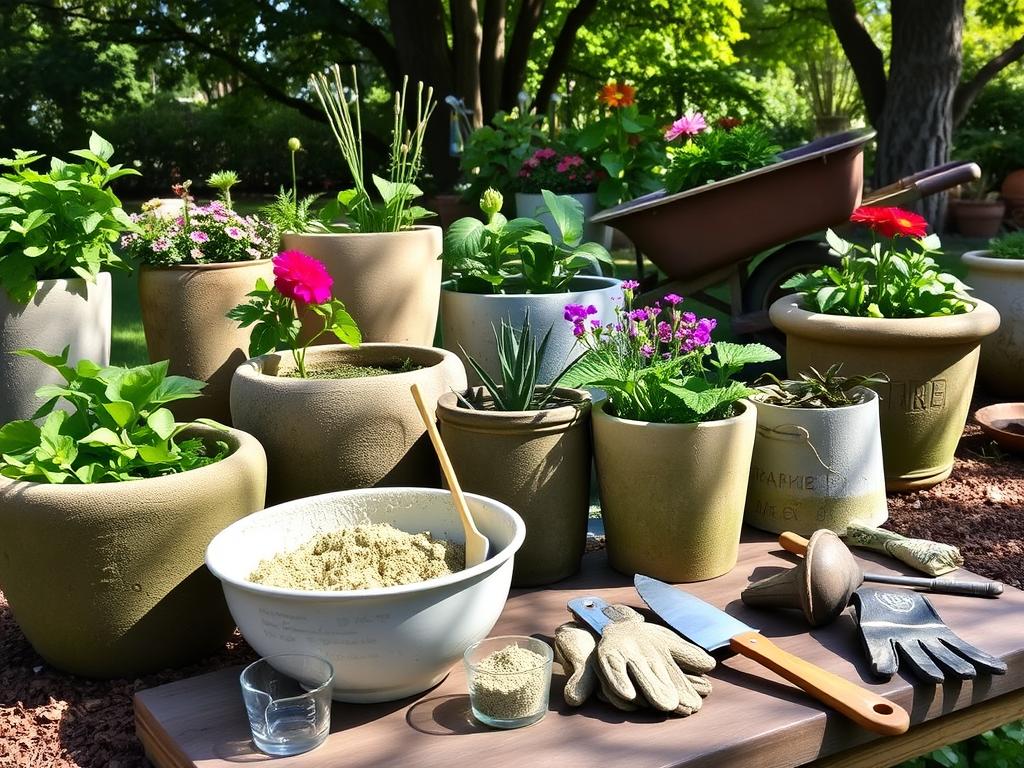
By using this hypertufa recipe and the right mix, you can make stunning outdoor planters. They will make your garden look amazing and help your plants grow well.
Simple Bowl-Shaped Hypertufa Planter Project
Creating a bowl-shaped hypertufa planter is a great way to add a personal touch to your garden. It’s perfect for those who enjoy DIY projects. With just a few materials and some basic molding, you can make a beautiful planter that will beautify your outdoor space.
Step-by-Step Creation Process
To make a bowl-shaped hypertufa planter, first mix the hypertufa mixture with water. This will help you get the right consistency. Then, shape the mixture into a bowl using a mold or a bowl.
Once it’s set, take it out of the mold. Let it cure for a few days. This will make it strong and ready for your plants.
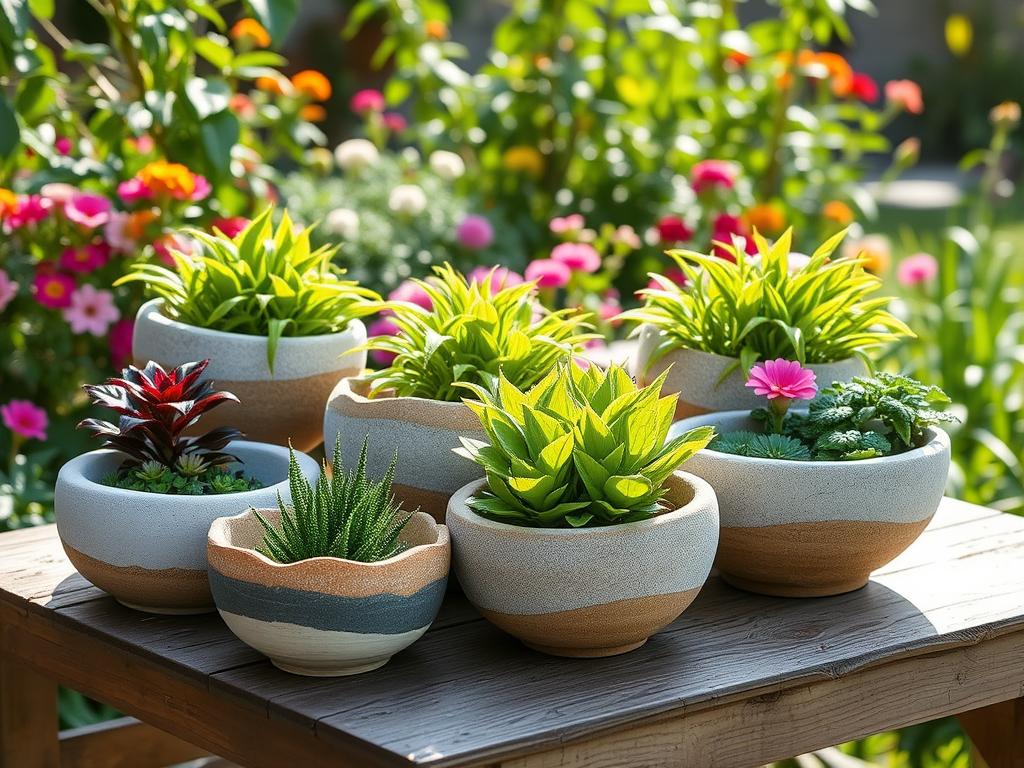
Molding Techniques
There are many ways to mold your hypertufa planter. You can use a bowl for a uniform shape or try unique shapes with different molds. Adding materials like pebbles or small rocks can make your planter more interesting.
Here are some tips for molding your hypertufa planter:
- Use a release agent to prevent sticking
- Apply gentle pressure for even distribution
- Try different shapes and sizes for unique planters
Creating Decorative Garden Troughs
Decorative garden troughs can make your garden stand out. Hypertufa projects are perfect for creating unique planters. They add beauty to your outdoor space. Start by planning the design and size of your trough.
Think about your garden’s style and theme. Hypertufa projects can match any style, from modern to traditional. You can also add carvings or textures to make it special.
Here are some tips for your garden trough:
- Choose a spot with the right sunlight and water for your plants
- Pick plants that match your garden’s style and theme
- Think about adding a drainage system to avoid waterlogged soil
A well-designed trough can be a stunning garden feature. Hypertufa projects let you create a unique planter.
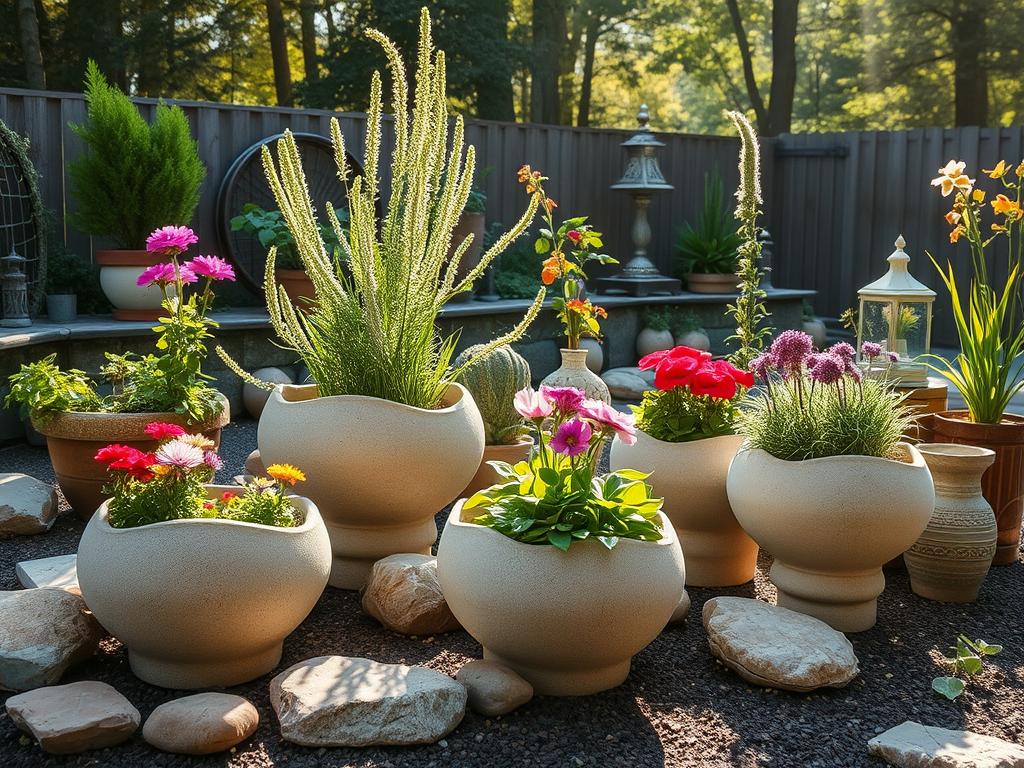
Follow these tips and use your creativity. You’ll make a trough that will impress everyone. Have fun and try out different designs and styles.
| Material | Quantity | Purpose |
|---|---|---|
| Hypertufa mix | 1 bag | Main material for trough |
| Water | 1 gallon | Mixing with hypertufa |
| Plants | varies | Decorative element |
Advanced Hypertufa Projects for Experienced Crafters
If you’ve got the basics of hypertufa down, it’s time to get creative. Advanced hypertufa projects need more skill and patience. But the end result is worth it. You can try out new shapes, textures, and designs to make unique planters.
Think about making sculptural elements like intricate molds or carved designs. These add a cool touch to gardens or indoor spots. Or, try making multi-tiered planters to show off several plants at once. You can also use textured surface techniques like stamping or stenciling to give your planters more character.
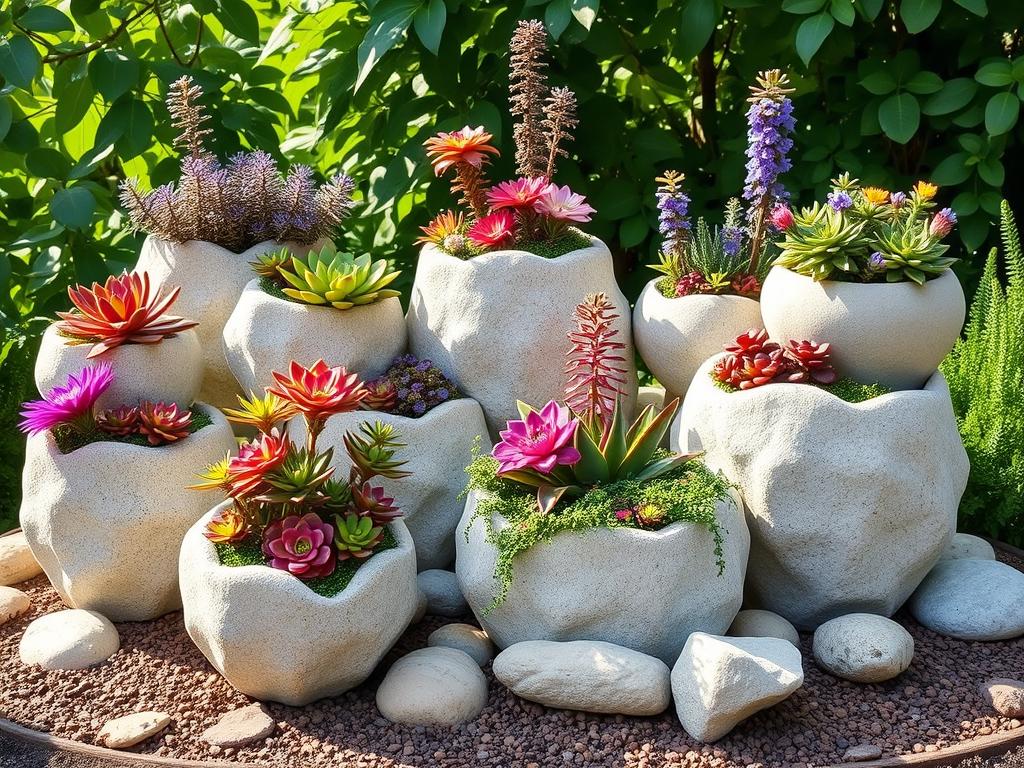
When you’re working on these projects, think about how they’ll look in your garden or home. Choose colors, textures, and designs that fit the theme. This way, your planters will not only show off your talent but also enhance the space around them. With time and effort, you can make truly amazing hypertufa projects.
- Sculptural elements, such as intricate molds or carved designs
- Multi-tiered planters for showcasing multiple plants or flowers
- Textured surface techniques, such as stamping or stenciling, for added depth and personality
Exploring advanced hypertufa projects lets you elevate your gardening skills. You can create unique, stunning pieces that show off your creativity and talent.
Troubleshooting Common Hypertufa Problems
Working with hypertufa can sometimes lead to issues that affect your project’s quality and look. Knowing how to handle these problems is key. Understanding the common issues and how to fix them with DIY solutions is crucial.
To avoid cracks, make sure your hypertufa mix is right and cure it in a stable place. Fixing uneven textures or color problems needs special techniques and materials. For bigger issues, like structural problems, you might need to add more materials to fix it.
Preventing Cracks
- Use a well-balanced hypertufa mixture
- Cure your project in a controlled environment
- Avoid excessive handling or movement during the curing process
Addressing Surface Issues
- Use a variety of textures and finishes to create a unique appearance
- Apply a sealant to protect the surface from the elements
- Regularly clean and maintain the surface to prevent discoloration
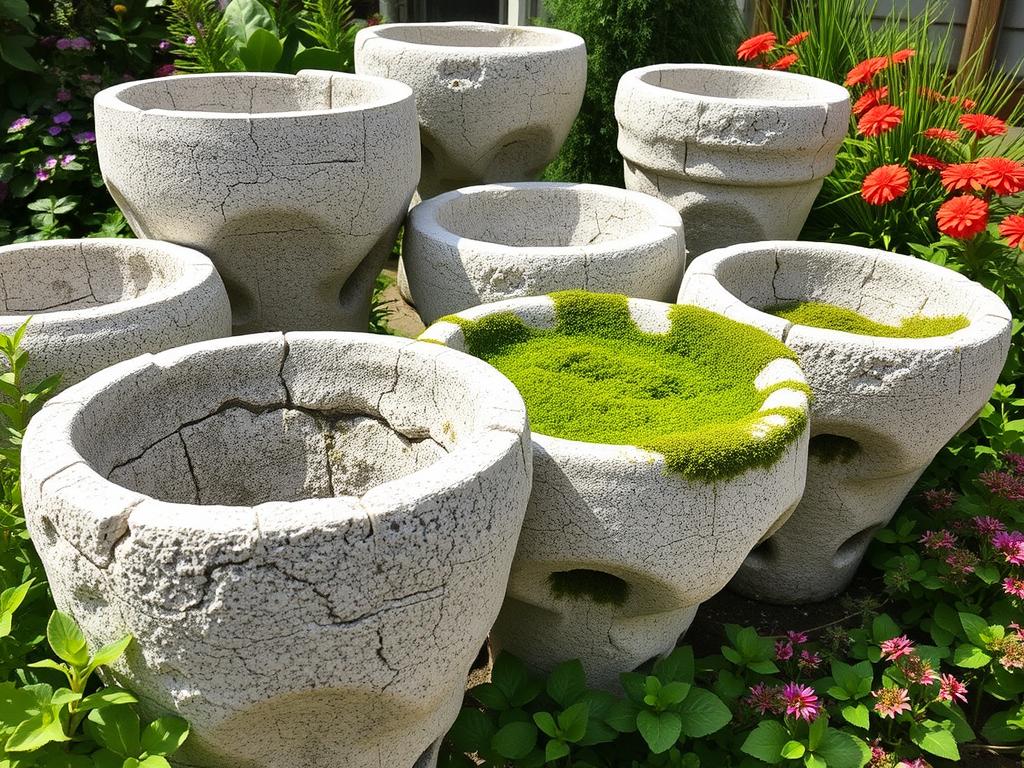
Fixing Structural Problems
| Problem | Solution |
|---|---|
| Cracks or fractures | Reinforce with additional materials, such as wire mesh or concrete |
| Uneven or unstable base | Use a level to ensure the base is even, and add support as needed |
By using these DIY solutions and being careful, you can solve common hypertufa problems. This way, you can make beautiful, lasting projects. Always focus on hypertufa troubleshooting for the best results.
Maintenance and Care of Hypertufa Planters
To keep your hypertufa care projects healthy and long-lasting, regular upkeep is key. This means shielding your outdoor planters from harsh weather like freezing and strong sunlight.
A well-cared-for hypertufa planter can last for many years. It offers a unique and stunning way to show off your plants. Here are some tips to keep your hypertufa planters looking their best:
- Regularly check your planters for damage or wear
- Apply a sealant to protect the hypertufa from moisture and weathering
- Keep your planters clean and free of debris
It’s also crucial to think about your plants’ needs when using outdoor planters. Choose plants that fit your local climate and soil. Make sure to provide enough water and nutrients.
By following these tips and caring for your hypertufa care
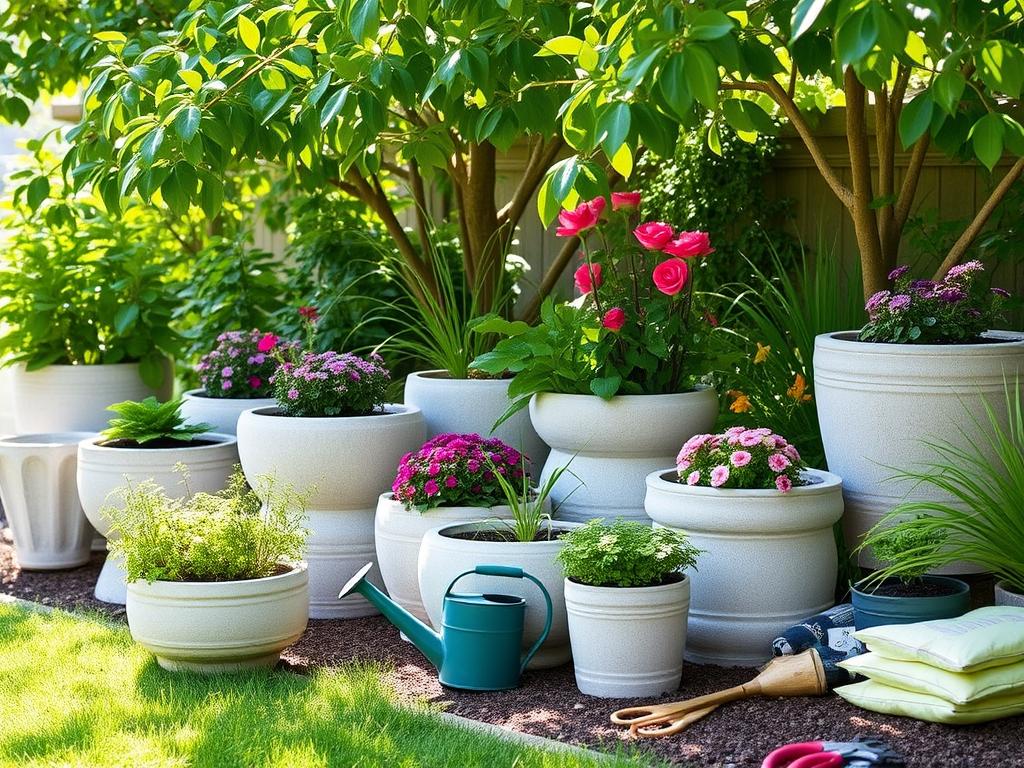
| Planter Type | Maintenance Requirements |
|---|---|
| Hypertufa Planters | Regular inspection, sealing, and cleaning |
| Concrete Planters | Periodic sealing and cleaning |
| Ceramic Planters | Regular cleaning and protection from extreme temperatures |
Seasonal Considerations for Outdoor Hypertufa
As the seasons change, it’s key to think about how they affect your outdoor hypertufa planters. Good seasonal care can make your planters last longer and look great. Hypertufa planters add beauty to your garden, but they need some upkeep to handle the weather.
In winter, protect your hypertufa planters from cold and wet. You can move them under cover or use a waterproof sealant. In summer, ensure they drain well and stay away from direct sunlight to avoid cracks.
Winter Protection Methods
- Bring planters under cover or store in a dry area
- Apply a waterproof sealant to protect from moisture
- Insulate planters with straw or bubble wrap
Summer Care Tips
- Provide adequate drainage to prevent waterlogged soil
- Keep planters out of direct sunlight to prevent cracking
- Regularly inspect planters for signs of damage or wear
By following these easy tips, your outdoor hypertufa planters will stay beautiful and useful in your garden decor for many years. Always remember to focus on seasonal care to keep your planters in the best shape.
| Season | Care Tips |
|---|---|
| Winter | Protect from freezing temperatures and moisture |
| Summer | Provide adequate drainage and keep out of direct sunlight |
Creative Design Ideas and Inspiration
Hypertufa designs offer endless possibilities. You can make unique planters that show off your style and match your garden’s look. Try different shapes, sizes, and textures to make your outdoor area more interesting.
Start by looking online for ideas. Find hypertufa designs that you like and see what makes them special. You can also make a mood board to help plan your ideas.
Some cool ideas for unique planters include:
- Geometric shapes, such as spheres or pyramids
- Natural textures, like wood or stone
- Vibrant colors or patterns, like mosaic tiles or painted designs
Creating beautiful hypertufa designs is all about having fun and being creative. Don’t hesitate to try new things and find what works for you.
By using these tips and letting your imagination soar, you can make unique planters that make your garden special.
| Design Element | Description |
|---|---|
| Shape | Consider using unusual shapes, like a sphere or pyramid, to add visual interest |
| Texture | Experiment with different textures, like wood or stone, to add depth and dimension |
| Color | Use vibrant colors or patterns, like mosaic tiles or painted designs, to add personality to your planters |
Conclusion: Embracing the Art of Hypertufa Crafting
As we wrap up this guide, it’s clear that hypertufa projects are special for gardeners and DIY fans. They let you create unique planters and garden features. This art lets you express your creativity and connect with nature.
Whether you’re new or skilled, hypertufa DIY gardening can make your outdoor areas special. By following the tips in this guide, you’ll make beautiful, unique pieces. These will add beauty and function to your garden.
Keep exploring hypertufa and enjoy the journey. Try new things and have fun. The joy of making your own planters and seeing your plants grow is unmatched. So, get your materials ready, improve your skills, and start your hypertufa crafting adventure.
FAQ
What is hypertufa?
Hypertufa is a mix of cement, peat moss, and other materials. It’s used to make planters that are light, durable, and look natural in gardens.
What are the benefits of using hypertufa for planters?
Hypertufa is better than regular concrete. It’s lighter, allows for better air and water, and looks like weathered stone. This makes it perfect for gardens.
What materials are needed to create hypertufa planters?
You’ll need cement, peat moss, perlite or vermiculite, and water. You can also add fibers and pigments for texture and color.
What tools are required for hypertufa projects?
You’ll need containers, gloves, trowels, and molds. Don’t forget safety gear like eye protection and a dust mask.
How do I create a simple hypertufa planter?
Start by mixing the hypertufa mixture. Press it into a mold and let it cure for a few days. This step is key for a strong planter.
Can I create more advanced hypertufa projects?
Yes, you can try more complex projects like sculptures or multi-tiered planters. Adding textures can also make your garden stand out.
How do I maintain and care for my hypertufa planters?
Keep them safe in winter and watch for cracks. Adjust your care routine with the seasons to keep your planters looking great.
Where can I find inspiration for hypertufa projects?
Look online or visit local gardens for ideas. This will help you create hypertufa planters that fit your garden’s style.